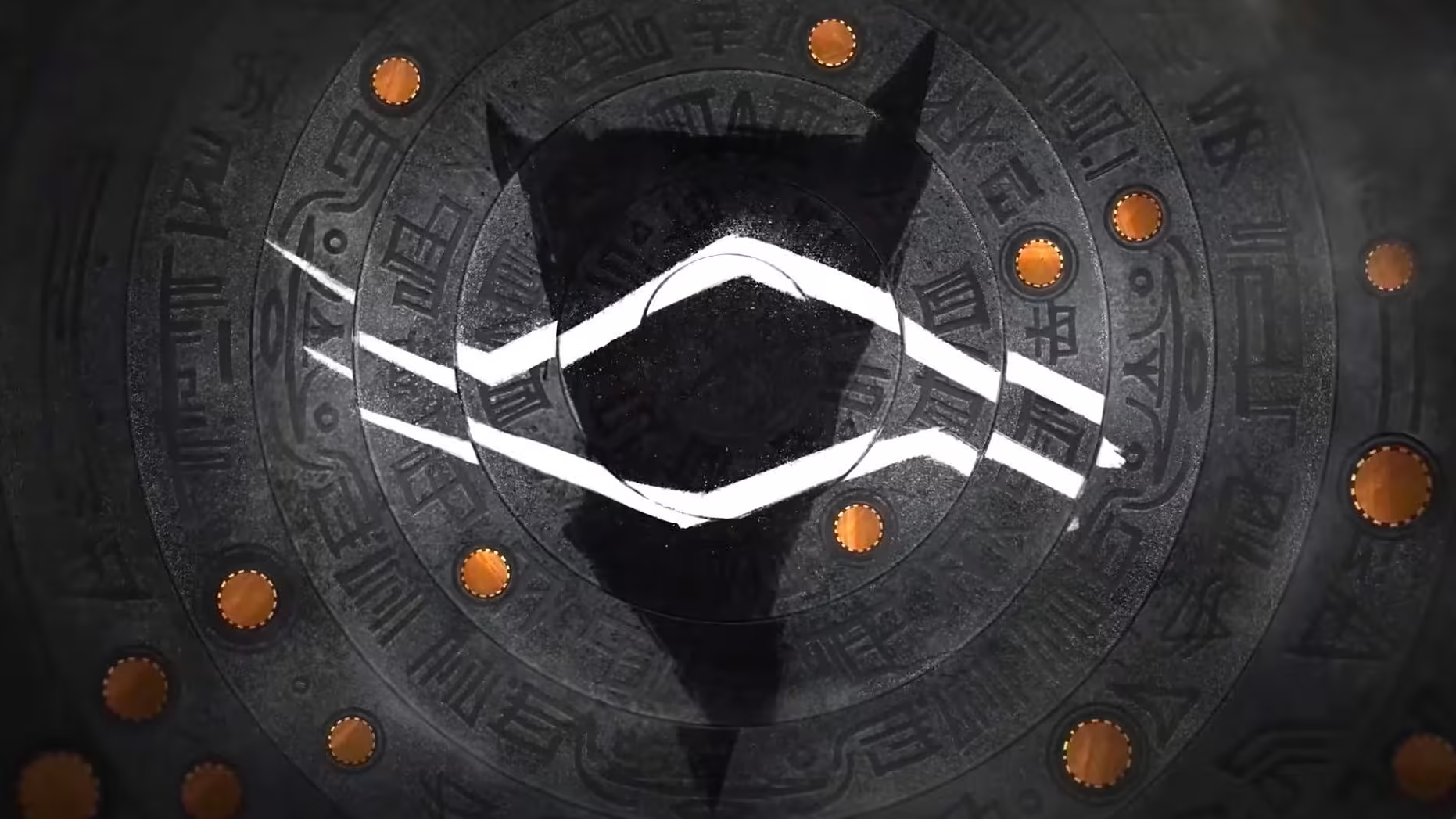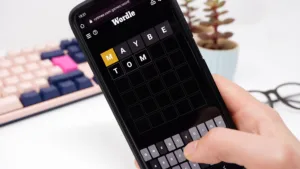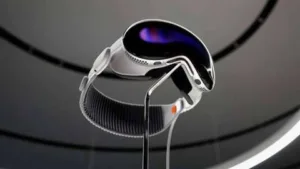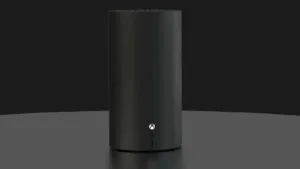Ghostrunner 2 Review
Estimated reading time: 9 minutes
The best sequels are the ones that can recapture what made the original so great, while also expanding those elements to make them feel bigger, grander, and more exciting than what came before. That’s exactly what Ghostrunner 2 manages to pull off. This is still a first person, one-hit-kill slasher where – to quote my review of the first one – you must run fast, slide fast, kill fast, and if you can’t do those things fast enough, you die fast. But now you get to do all of that while also occasionally riding an absolutely sick motorcycle, and with a wider variety ninja tricks to customize your playstyle. Couple that with a much more fleshed out world, excellent level variety, fantastic bosses, and a thumping soundtrack that enhances the action, and you’ve got one of the most exciting action games all year.
Ghostrunner 2 picks up shortly after the events of the first game, which are recapped in a handy dandy video. Story is a much bigger focus this time around, with most levels being preceded by a visit to a hub where you can chat with your fellow rebels. You’ll learn about their mostly interesting backstories, as well as the post apocalyptic cyberpunk dystopia that is Dharma City, with conversations that were always interesting enough to make me want to check in with everyone before my next mission. There’s Zoe, your friend from the original that helped you find your humanity; Saul, the kind hearted doctor who fixes you up; Kira, a brilliant but morally questionable scientist that used to work for the other side; along with another surprise face or two. It’s not RPG levels of characterization and world building, but these interactions did a great job of grounding me in Ghostrunner 2’s world.
Lethal Weapon
Fundamentally, Ghostrunner 2 plays very much like the first – It’s one hit, one kill for both you and your enemies, which makes for a lightning fast flow. You’ll be darting all across very carefully crafted combat arenas as you desperately try to avoid fire and close the distance between you and your opposition at the same time. If you die, respawns are super quick and checkpoints are very forgiving, which meant I could die 10, 20, maybe even 50 times trying to beat a tricky combat encounter without feeling any frustration.
Basically, imagine Hotline Miami or Katana Zero, but in a 3D space, and with all sorts of mobility options that let you dodge bullets and outmaneuver foes with ease.
While that core is still the same in Ghostrunner 2, there are several notable changes that affected how I approached its challenges. For one, there’s now a stamina meter that governs your newfound ability to block attacks and dash multiple times in succession. Blocking may sound exceptionally strong in a game where all it takes is one hit to die, but evading enemies is still the way to go when it comes to surviving the chaos that is Ghostrunner’s combat encounters because of how quickly the meter depletes, the many unblockable attacks that enemies use, and the fact that blocking certain attacks will still send you reeling backwards. Still, being able to just block as opposed to having to perfectly time a parry offers some nice leeway that makes many boss encounters much more forgiving, and fun.
Imagine Hotline Miami or Katana Zero, but in a 3D space, and with all sorts of mobility options that let you outmanuever foes with ease
More substantial are your new special abilities. Shurikens return, but are now available on demand as opposed to being a limited time powerup, which gives you a powerful, but meter managed, ranged attack to go along with your trusty katana. It’s especially fun to use on big enemies like the bipedal mechs, as a hit with a shuriken turns them into a grapple point, which allows you to quickly, and satisfyingly, go in for the kill while also staying on the move. The Ghostrunner gets a few other brand new special abilities and ultimate techniques added to his arsenal as well, such as the Shadow skill, which allows you to turn invisible and create a double at the spot where you activated it, and Flux, which allows you to shoot out a continuous laser beam for a few seconds to decimate groups of foes.
Thankfully, you no longer have to arrange blocks like a puzzle to upgrade these abilities. Skill progression is much more straightforward, with you unlocking a variety of upgrade chips naturally just by playing through the campaign. You can purchase whatever chips you want, but in order to equip them to your motherboard, you’ll have to add slots by finding purple memory chips hidden in each level. This adds a nice incentive to really explore for the secrets of every stage beyond just unlocking superficial collectibles, like new sword skins, glove colors, etc.
I always looked forward to coming back to the base and seeing what new skill chips were available, because they really do a great job of giving noticeable perks that could dramatically change my approach to a level. I could invest in Shurikens and give myself more of an edge from a distance, or I could invest in my sword skills and get rewarded more heavily for executing perfect parries. Or,r if I feel especially confident, I could invest in flow and gain powerful buffs, but only if I’m able to string kills together without letting the combo counter drop.
Now Leaving Dharma City
One of the best qualities of the first Ghostrunner was how just about every level introduced some sort of new element for you to deal with, making the campaign feel fresh all the way through. Apparently that well of ideas never came close to running dry because the same is true for Ghostrunner 2. Throughout the entirety of its 10-12 hour campaign, you’re constantly encountering new enemy types, gaining new powers or abilities, visiting a variety of gorgeous and visually distinct areas both in and outside of Dharma City, and getting thrown into arenas that give you exciting new ways to use your existing powers.
There’s a truly impressive amount of variation within each of its gameplay styles.
The different styles of gameplay can basically be broken down into: Combat arenas, parkour challenges, and motorcycle segments, but there’s a truly impressive amount of variation within each of those styles. Because of the one-hit kill nature, combat often becomes a puzzle where you have to figure out which way to approach from, what enemies you should target first, which of them can be easily taken out with environmental hazards, and so on. Every encounter is an incredibly satisfying combination of planning, execution, and on the fly improvisation.
On the parkour side, it’s a lot of what existing fans are probably used to: Lengthy stretches of wallrunning, railgrinding, grapple hooking, and pole swinging. But in Ghostrunner 2, it’s everything in between those actions that makes it special. Sometimes you’ll need to use a shuriken to power up a device, and then quickly move onto it before certain death; other times you’ll need to use your shadow ability at just the right time to interrupt a beam of light that causes a life saving swinging pole to emerge; and in my absolute favorite section, you’ll need to swap between making two different colored objects tangible as you jump between them, much like you would in Guacamelee or one of Star Wars Jedi: Survivor’s more challenging bonus rooms. It’s tough as nails, but absolutely exhilarating.
And then there’s the motorcycle, which is responsible for some of the coolest moments in all of Ghostrunner 2. You’ll not only use it for high speed tunnel chases, but also as a key exploration tool in the back half of the story to explore huge open environments. Some of the best bits are when you’re speeding through a claustrophobic tunnel, quickly shifting to riding on the ceiling to avoid a hazard, or when you leap off your bike, send it careening towards a group of enemies, and then grapple hook right back on it. Ghostrunner 2 is full of moments like this where I had to take my hands off of the keyboard for a second and just admire how cool a game just made me feel. All of this is enhanced by a perfectly matched thumping electronic soundtrack that had my head bobbing all throughout.
Rogue Ghost
In addition to the campaign, there’s also a really fun side mode called Rogue Runner that cleverly uses the upgrades, enemies, and powers from the main game, mixes them in with randomized parkour and combat challenges, and turns it all into a very compelling roguelike formula.
The way it works is that every run you start with just a basic set of moves, a limited number of lives, and you’re able to choose what type of level you play next; whether that be a combat level, a parkour level, or a harder version of those levels that promise a better reward. The levels themselves are procedurally generated, making it very important to be able to quickly read and understand the nuances of a particular challenge, since the element of trial and error is largely gone when you only have a handful of lives to take you through the whole mode. Beating a level may reward you with more lives, or you can choose one of three upgrade chips, most of which can be obtained in the main game, but some of which are exclusive to this mode.
Ultimately, it’s an expanded version of the wave mode that was introduced as DLC in the first game, but it’s still nonetheless a compelling extra mode that I’m having a great time coming back to even after having completed the main campaign.










Post Comment